Dogs have an incredible sense of smell, and it's no secret that they love to sniff around. Whether they're exploring their environment or tracking down prey, dogs rely heavily on their sense of smell. However, some dog owners have noticed that their furry friends seem to get tired after a particularly intense sniffing session. This raises the question: does sniffing make dogs tired?
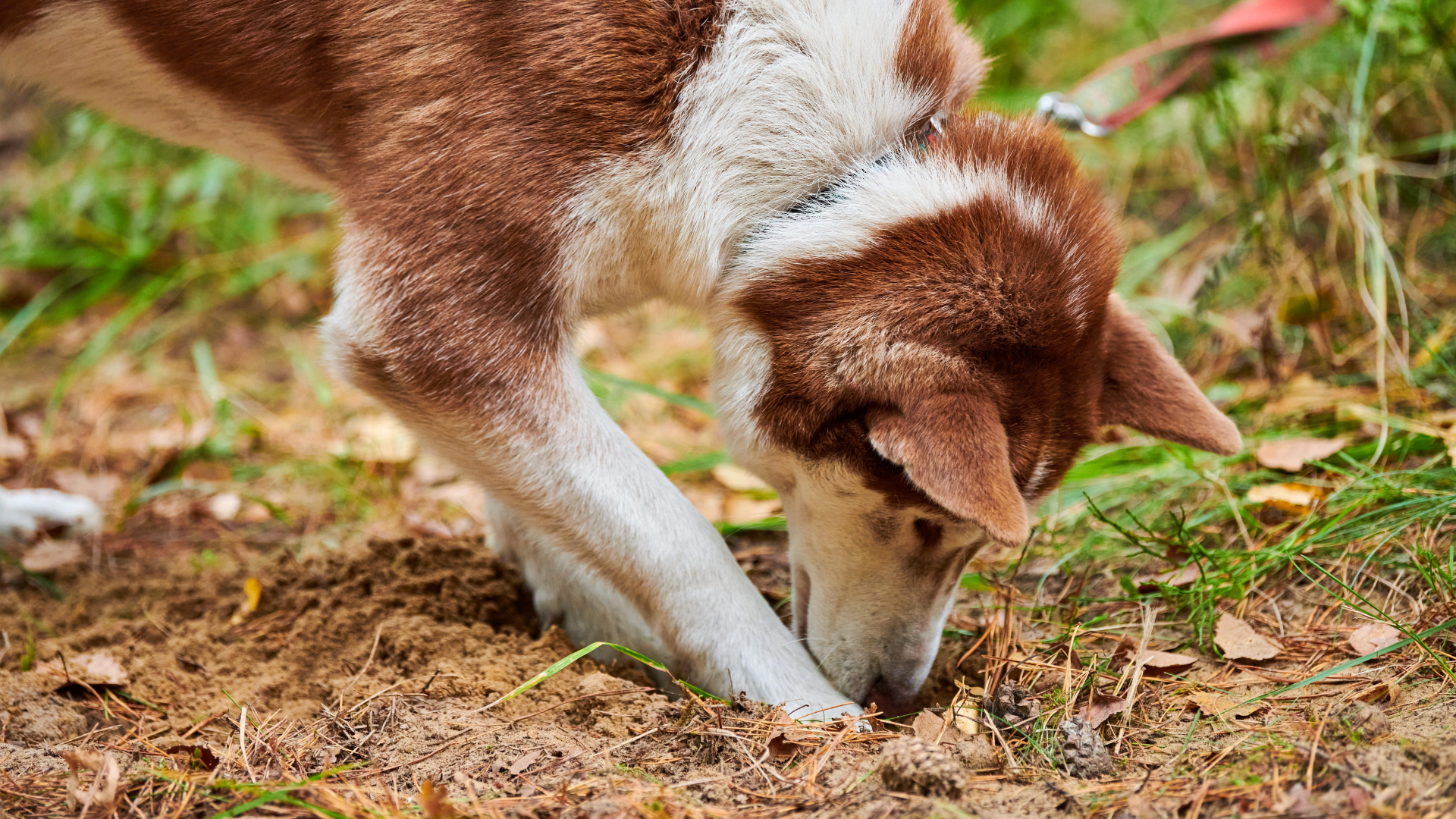
While there isn't a definitive answer to this question, there are some factors that could contribute to a dog feeling tired after sniffing. For one, sniffing requires a lot of physical exertion. Dogs use their entire bodies to sniff, from their noses all the way down to their tails. This means that they're constantly moving and expending energy while they're sniffing around.
Additionally, sniffing can be mentally taxing for dogs. They have to process a lot of information from the scents they're picking up, and this can be exhausting over time.
Despite these potential factors, it's important to note that not all dogs will get tired from sniffing. Some dogs may be able to sniff for hours on end without showing any signs of fatigue. It ultimately depends on the individual dog and their level of physical fitness and mental stamina.
Understanding Canine Sniffing Behavior
Canine sniffing behavior is a fascinating aspect of a dog's natural instincts. Dogs are known for their exceptional sense of smell, which is up to 100,000 times more powerful than that of humans. This ability allows them to detect scents that are undetectable to humans.
The Science of Sniffing
Dogs have a highly developed olfactory system that enables them to detect and differentiate a vast range of scents. The canine nose has up to 300 million scent receptors, while humans have only around 5 million. Moreover, dogs have a vomeronasal organ that enhances their sense of smell, allowing them to detect pheromones and other scents that are not detectable by conventional olfactory receptors.
When a dog sniffs, it inhales air through its nose and then exhales it out through the sides of its nose. This process allows the dog to sample the surrounding air and pick up scents that are carried by the wind. The dog's nostrils are also designed to alternate between inhaling and exhaling, allowing them to sample a continuous stream of scents.

Sniffing as a Natural Instinct
Sniffing is a natural instinct for dogs, and they use it to gather information about their surroundings. Dogs rely heavily on their sense of smell to communicate with other dogs and to gather information about their environment. When a dog sniffs, it can determine the gender, age, health, and emotional state of another dog.
Moreover, sniffing is an essential part of a dog's daily routine. It provides mental stimulation and helps reduce stress and anxiety. Sniffing also helps dogs to identify familiar scents, which can provide them with a sense of security.
The Role of Olfactory Receptors
Olfactory receptors are specialized cells located in the lining of the nasal cavity. These receptors are responsible for detecting different scents and sending signals to the brain. Dogs have a much larger number of olfactory receptors than humans, which allows them to detect scents at much lower concentrations.
The olfactory receptors are also responsible for detecting different types of scents. Dogs can detect different types of scents, including food, prey, and danger. They can also detect the scent of their owners, which helps them to identify their location and feel secure.
In conclusion, canine sniffing behavior is a natural instinct that is essential for a dog's well-being. Dogs use their sense of smell to gather information about their environment, communicate with other dogs, and reduce stress and anxiety. The science of sniffing is fascinating and highlights the remarkable abilities of dogs' olfactory systems.
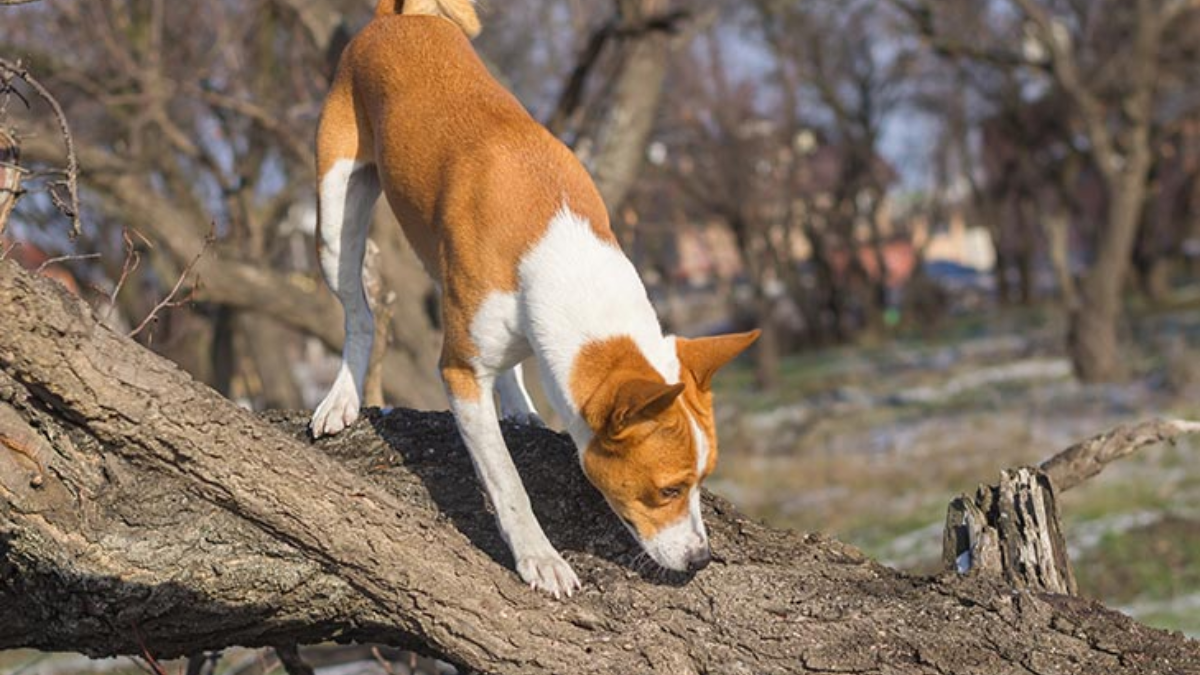
Physical and Mental Aspects of Sniffing
Mental Stimulation Through Sniffing
Dogs have an incredible sense of smell, which they use to explore and understand the world around them. When a dog sniffs, it is not just a physical activity, but also a mental one. Sniffing provides mental stimulation for dogs as they use their brains to process and analyze the smells they encounter.
Research has shown that sniffing can increase a dog's mental energy and joy. Dogs who are allowed to sniff during walks are often more relaxed and content than those who are not. This is because sniffing allows them to engage in a natural behavior that is both mentally and physically stimulating.
Physical Exercise and Sniffing
Sniffing is not just mentally stimulating, but also provides physical exercise for dogs. When a dog sniffs, it engages not only its sense of smell but also its entire body. Dogs often move their heads and bodies as they follow a scent, which can be a form of physical exercise.
Allowing a dog to sniff during walks can provide a low-impact form of physical exercise that is suitable for dogs of all ages and abilities. It can also help to prevent boredom and destructive behavior, as dogs who are mentally and physically stimulated are less likely to engage in these types of behaviors.
In conclusion, sniffing is an important activity for dogs that provides both mental stimulation and physical exercise. By allowing dogs to sniff during walks, owners can help to promote their dog's overall well-being and happiness.
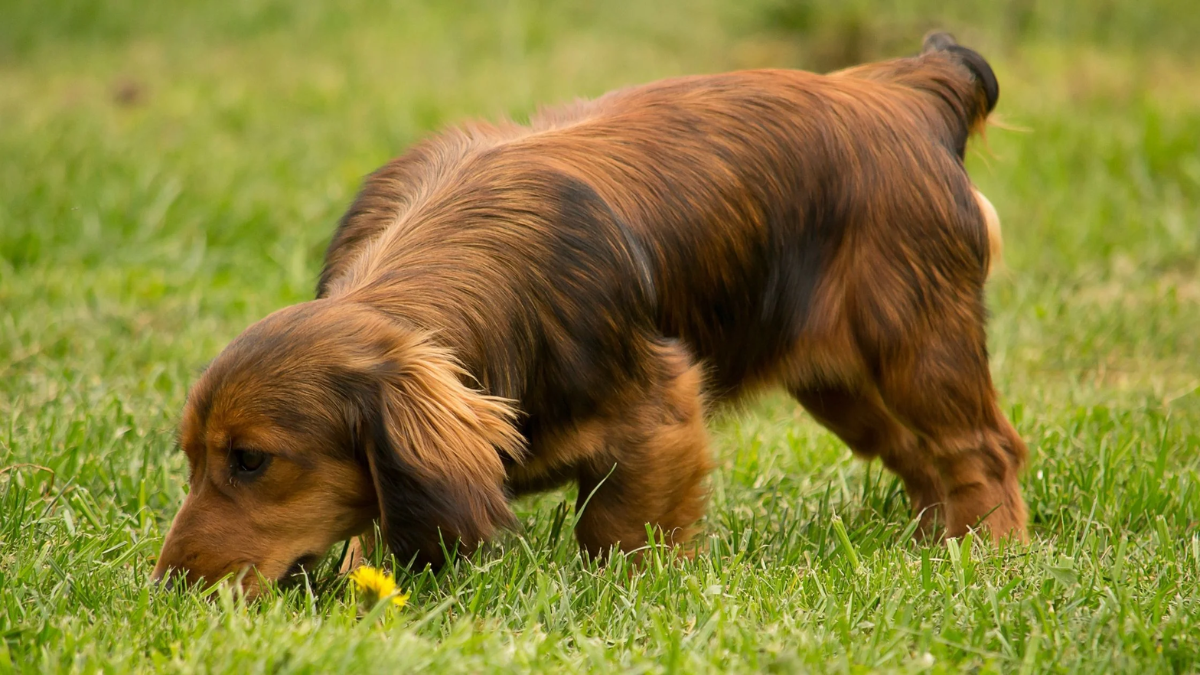
The Impact of Sniffing on Canine Fatigue
Energy Expenditure in Sniffing
Dogs are known for their exceptional sense of smell, which they use to explore their surroundings. Sniffing is a natural behavior that allows dogs to gather information about their environment, other animals, and even humans. However, sniffing also requires a lot of energy, and it can cause dogs to become tired and exhausted.
Research has shown that sniffing can significantly increase a dog's energy expenditure. In fact, a study conducted by the University of Helsinki found that dogs use up to 40% more energy when they are sniffing compared to when they are walking or running. This means that prolonged periods of sniffing can cause dogs to become tired and fatigued.
Signs of a Tired Dog
It is important for dog owners to recognize the signs of a tired dog. One of the most obvious signs is excessive panting, which is a common symptom of fatigue. Dogs may also become less active and may not want to play or go for walks. In some cases, dogs may even sleep more than usual or have difficulty staying awake.
It is important to note that excessive fatigue in dogs can also be a sign of underlying health issues. If a dog is consistently tired and shows signs of exhaustion, it is important to take them to a veterinarian to rule out any potential medical problems.
In conclusion, while sniffing is a natural behavior for dogs, it can also cause them to become tired and fatigued. It is important for dog owners to recognize the signs of fatigue and provide their dogs with adequate rest and recovery time.
Benefits of Sniffing for Dogs
Dogs are known for their exceptional sense of smell, and sniffing is an activity that comes naturally to them. While it may seem like a simple and instinctive behavior, there are actually many benefits to sniffing for dogs.

Enhancing Well-Being and Happiness
Sniffing is a great way for dogs to enhance their well-being and happiness. When a dog sniffs, it stimulates their brain and releases dopamine, a neurotransmitter that plays a key role in regulating mood and happiness. This can help to reduce stress and anxiety in dogs and promote a more positive and relaxed state of mind.
In addition to the release of dopamine, sniffing also provides dogs with a sense of mental stimulation and satisfaction. By engaging in this behavior, dogs are able to explore their environment and satisfy their curiosity, which can lead to a greater sense of fulfillment and contentment.
Sniffing as a Form of Communication
Sniffing is also an important form of communication for dogs. When a dog sniffs, they are able to gather information about their surroundings, including the presence of other animals and potential sources of food. This information can be used to communicate with other dogs and humans and can help to establish social hierarchies and relationships.
In addition to communicating with other animals, sniffing can also be a way for dogs to communicate with their owners. By sniffing their owner's scent, dogs are able to establish a sense of familiarity and comfort, which can help to strengthen the bond between them.
Overall, sniffing is an important and beneficial behavior for dogs. By engaging in this activity, dogs are able to enhance their well-being and happiness, while also communicating with their surroundings and establishing important relationships.
Sniffing in Different Environments
Dogs use their sense of smell to explore the world around them, and sniffing is an essential part of their daily routine. However, the environment in which they sniff can have a significant impact on their behavior and energy levels.
Indoor vs. Outdoor Sniffing
Indoor sniffing is often more controlled, as dogs are typically confined to a smaller space. This can lead to more intense sniffing behavior, as they try to explore every nook and cranny. However, indoor environments can also be less stimulating, leading to less overall sniffing and potentially less fatigue.
On the other hand, outdoor sniffing can be more unpredictable and stimulating. Dogs have a wider range of scents to explore, and the changing environment can keep them engaged and active. However, outdoor sniffing can also be more physically demanding, as dogs may need to navigate uneven terrain or deal with weather conditions.
The Effect of Surfaces on Sniffing
The surface on which a dog is sniffing can also have an impact on their behavior and energy levels. For example, sniffing on grass or dirt can be more physically demanding than sniffing on a flat, even surface like concrete. This is because dogs may need to use more energy to navigate hills or uneven terrain.
Additionally, different surfaces can provide different scents for dogs to explore. For example, concrete may have more man-made scents, while grass may have more natural scents. This can affect the intensity and duration of sniffing behavior.
Overall, the environment and surfaces on which dogs sniff can have a significant impact on their behavior and energy levels. As a responsible dog owner, it is important to consider these factors when planning activities for your furry friend.
Dog Training and Sniffing Activities
Training Exercises Involving Sniffing
Sniffing is a natural behavior for dogs, and it can be used as a training tool to improve their focus and attention. Training exercises involving sniffing can also help to tire out dogs mentally, which can be especially useful for high-energy breeds.
One popular exercise is the "find it" game, where owners hide treats or toys around the house or yard and encourage their dogs to use their noses to locate them. This can be a fun and engaging way to train dogs to use their sense of smell while also providing mental stimulation.
Another training exercise involving sniffing is teaching dogs to "leave it." This involves training dogs to ignore certain scents or objects, which can be useful for preventing them from getting into dangerous or unwanted items.
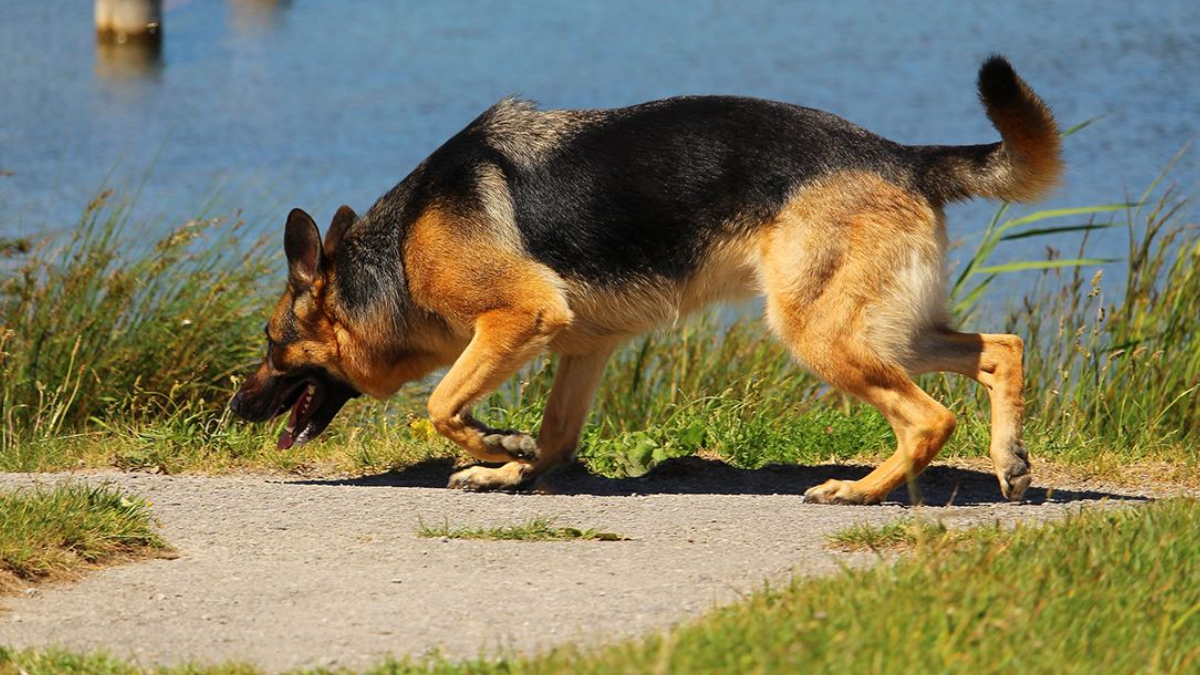
Play and Sniffing
In addition to training exercises, playtime can also involve sniffing activities. Puzzle toys, such as those that require dogs to sniff out hidden treats, can provide mental stimulation and entertainment for dogs.
Owners can also use playtime to encourage their dogs to use their sense of smell. For example, hiding toys or treats around the house or yard can be a fun way to engage dogs in sniffing activities.
Overall, incorporating sniffing activities into dog training and playtime can provide mental stimulation and help to tire out dogs. By using their natural sense of smell, dogs can improve their focus and attention while also having fun.
Dog Owner's Guide to Sniffing
When it comes to walking your furry friend, you may have noticed that they tend to stop and sniff around quite frequently. This behavior is not only natural but also essential for their mental and physical health. In this section, we will discuss how to manage your dog's sniffing behavior and balance it with walking.
Balancing Sniffing and Walking
While it may be tempting to rush your dog through their sniffing, it is essential to let them take their time. Sniffing allows dogs to explore their surroundings and gather information about the environment, other animals, and even people. Therefore, it is crucial to allow your dog to sniff around and not force them to move on too quickly.
However, it is also important to balance sniffing with walking. Too much sniffing can lead to a lack of exercise and may cause your dog to become tired quickly. Therefore, it is recommended to set a limit on how long your dog can sniff in one spot before moving on. This way, your dog can enjoy their sniffing while still getting the exercise they need.

Managing Sniffing Behavior
To manage your dog's sniffing behavior, it is essential to have control over them. Using a leash and harness can help you manage your dog's movements and prevent them from pulling or running off. It is also crucial to train your dog to respond to commands such as "stop" or "come" to prevent them from wandering too far or getting into dangerous situations.
As a dog owner, you have the choice to allow your dog more freedom or to keep them on a shorter leash. If you are in a busy area with a lot of distractions, it may be best to keep your dog on a shorter leash to prevent them from getting overwhelmed or distracted. On the other hand, if you are in a quieter area, you may want to allow your dog more freedom to explore and sniff around.
In conclusion, sniffing is a natural and essential behavior for dogs during walks. As a dog owner, it is essential to manage your dog's sniffing behavior and balance it with walking to ensure they get the exercise they need. By using a leash and harness, training your dog to respond to commands, and making choices about their freedom, you can ensure your furry friend has a safe and enjoyable walking experience.
Specific Breeds and Sniffing Traits
Breed-Specific Sniffing Behaviors
Different dog breeds have varying levels of olfactory abilities and preferences for certain scents. For instance, bloodhounds are known for their exceptional sense of smell and are often used for tracking scents over long distances. They have around 300 million scent receptors in their noses, which is about 50 times more than humans. Beagles, on the other hand, are known for their ability to detect scents close to the ground and are often used for hunting small game.
Other breeds, such as German Shepherds and Labrador Retrievers, are commonly used as police and search and rescue dogs due to their ability to detect a wide range of scents and their willingness to work. However, it is important to note that a dog's individual personality and training also play a significant role in their sniffing abilities and behavior.
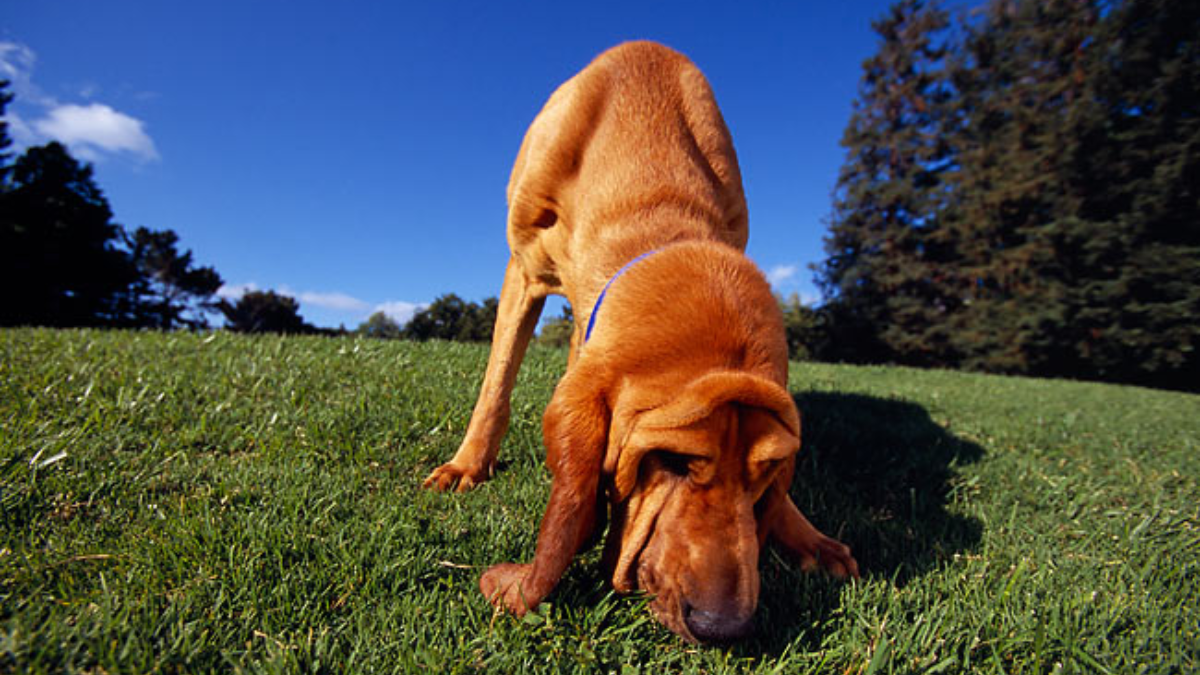
Working Dogs and Their Sniffing Skills
Working dogs, such as those in law enforcement or search and rescue, undergo extensive training to enhance their natural sniffing abilities. They are trained to detect specific scents, such as narcotics or explosives, and to alert their handlers when they have found something.
During training, dogs are often rewarded for successfully locating the target scent, which reinforces their behavior and encourages them to continue searching. However, this type of training can be mentally and physically exhausting for the dogs, and it is important for handlers to recognize when their dogs need a break.
In conclusion, while certain breeds may have a natural inclination towards sniffing, a dog's individual personality and training also play a significant role in their sniffing abilities and behavior. Working dogs undergo extensive training to enhance their natural abilities, but it is important for handlers to recognize when their dogs need rest and recovery.
Sniffing and Canine Health
Dogs are known for their incredible sense of smell, and they use this ability to explore the world around them. But does all this sniffing make them tired? This section explores the relationship between sniffing and canine health.
Sniffing-Related Health Benefits
Sniffing is a natural behavior for dogs, and it can have several health benefits. When dogs sniff, they take in a variety of scents that stimulate their brains and provide mental stimulation. This can help reduce stress and anxiety, leading to a calmer and happier dog.
In addition, sniffing can be a form of physical activity for dogs. When they are sniffing, they are using their noses, which requires physical effort and can help keep them active and healthy.
When Sniffing Indicates Health Issues
While sniffing is generally a healthy behavior for dogs, excessive or unusual sniffing can sometimes indicate underlying health issues. For example, if a dog is constantly sniffing the ground or objects, it could be a sign of anxiety or stress. Similarly, if a dog suddenly starts sniffing excessively, it could be a sign of an underlying health issue.
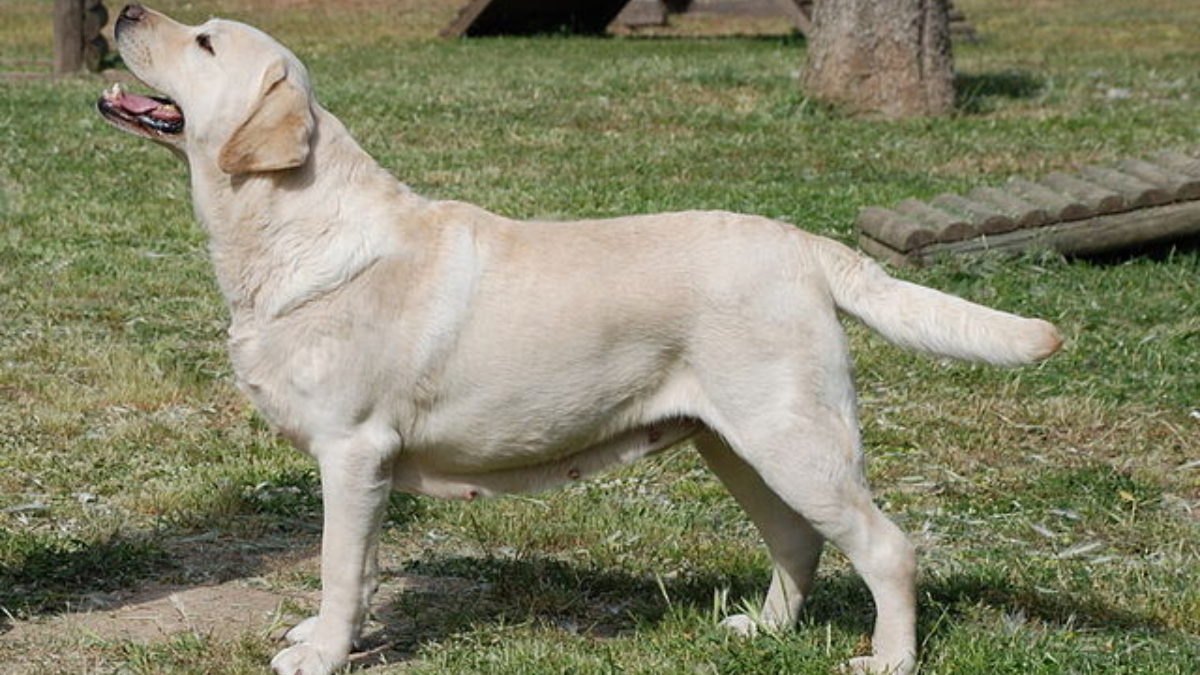
It is important for dog owners to monitor their dog's sniffing behavior and look for any changes or abnormalities. If a dog's sniffing behavior changes suddenly or becomes excessive, it is always a good idea to consult a veterinarian to rule out any underlying health issues.
Overall, sniffing is a natural and healthy behavior for dogs, and it can provide several health benefits. However, it is important for dog owners to be aware of their dog's sniffing behavior and look for any changes or abnormalities that could indicate underlying health issues.
Conclusion:
In conclusion, the question "Does sniffing make dogs tired?" prompts a deeper exploration into canine behavior and its effects on fatigue. Through this investigation, we've uncovered the intricate relationship between sniffing behavior and a dog's energy levels. While sniffing is a natural and instinctive behavior for dogs, its impact on their tiredness may vary based on factors such as duration, intensity, and environment.
Our examination reveals that while extensive or intense sniffing activities may contribute to a temporary increase in a dog's fatigue, sniffing itself is not necessarily a direct cause of tiredness. Instead, it serves as a means for dogs to gather information, stimulate their senses, and engage in mental stimulation, which can be enriching and fulfilling for them.
Understanding the nuanced dynamics of canine sniffing behavior and its potential effects on tiredness empowers dog owners and enthusiasts to make informed decisions about their pet's well-being. By providing ample opportunities for sniffing activities while also ensuring adequate rest and relaxation, owners can promote a balanced and healthy lifestyle for their canine companions.
In essence, while sniffing may temporarily affect a dog's energy levels, it is an essential aspect of their natural behavior and contributes positively to their overall mental and physical enrichment.
Frequently Asked Questions (FAQs)
- How much exercise does 10 minutes of sniffing provide for a dog?
- Sniffing can provide a moderate level of exercise for dogs. In fact, 10 minutes of sniffing can be equivalent to a 30-minute walk for some dogs. However, the amount of exercise a dog gets from sniffing depends on various factors, such as the intensity of the sniffing and the dog's breed, size, and age.
- Can extensive sniffing be a form of exercise for dogs?
- Yes, extensive sniffing can be a form of exercise for dogs. Sniffing is a natural behavior for dogs, and it engages their senses and brains. When dogs sniff, they use various muscles in their body, including their neck, back, and legs. Thus, extensive sniffing can help dogs burn calories and stay fit.
- What are the benefits of sniffing for a dog's mental and physical health?
- Sniffing has several benefits for a dog's mental and physical health. It can help reduce stress and anxiety, promote relaxation, and improve their mood. Additionally, sniffing can improve a dog's cognitive function and memory. It can also help dogs develop their sense of smell, which is an essential part of their communication and survival skills.
- How does the intensity of sniffing compare to running for a dog's energy expenditure?
- The intensity of sniffing is not as high as running for a dog's energy expenditure. However, the duration and frequency of sniffing can compensate for the lower intensity. Moreover, sniffing engages a dog's senses and brain, which can be mentally stimulating and tiring for them.
- Why might a dog engage in persistent sniffing behavior?
- Dogs engage in persistent sniffing behavior for various reasons. They may be trying to gather information about their surroundings, such as the presence of other animals or food. They may also be following a scent trail or marking their territory. Additionally, persistent sniffing can be a way for dogs to relieve stress and anxiety.
- Does the duration of a dog's sniffing session affect its level of tiredness?
- Yes, the duration of a dog's sniffing session can affect its level of tiredness. Longer sniffing sessions can be more mentally and physically tiring for dogs. However, the level of tiredness also depends on the intensity and frequency of sniffing, as well as the dog's individual characteristics.